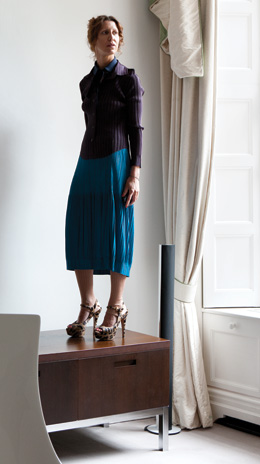alumni profile
Renaissance Host
Valeria Napoleone / WSUC ’90
by Megan Doll / GSAS ’08
For the past 15 years, Valeria Napoleone’s elaborate dinner parties—attended by artists, writers, gallerists, and designers from across Europe—were simply a labor of love for the noted art collector. That is, until one such night during the Frieze Art Fair, when painter Delia Brown tasted her food for the first time. “She loved it and said, ‘You absolutely must do a book,’ ” Napoleone recalls. “It made total sense to me.”

Three years later, Valeria Napoleone’s Catalogue of Exquisite Recipes (Koenig Books) makes a treasure trove of recipes from the veteran hostess available to the public. Culled largely from her Lombardian family, the book unites childhood memories, like her father’s beloved pasta e fagioli soup, with contemporary savories from her parties, such as arrosto di vitello al latte (roast veal with milk) and lasagne al forno (baked lasagna). It also synthesizes Napoleone’s twin roles in the art world—that of collector and patron. So unlike most cookbooks, Napoleone’s eschews conventional illustrations of the recipes. Instead, she interlards each section with an assortment of works from 49 female artists, the majority of whom are featured in her own collection.
Since her first acquisition in 1997, Napoleone has become well known in the art world for exclusively collecting the works of women. And while many in her place often employ a consultant, Napoleone prefers to do all the legwork herself, including visits to each artist’s studio. “Before the actual buying goes a lot of research,” she says.
The book is an especially personal endeavor for Napoleone because it mines her gustatory history and because a portion of its profits will go to support Down Syndrome Education International, a cause close to her heart. Napoleone, in turn, prizes how personal many of the artists’ contributions are, such as Jill Spector’s zabaione mousse, a sort of photographic tableaux vivants in which the artist and her daughter figure, and Polish-born Goshka Macuga’s collages, which juxtapose images of Soviet-era foodstuffs with cheesecake pinup girls. “I hope that this book has two lives in a home,” she reflects, “one in the kitchen and one on the coffee table.”







